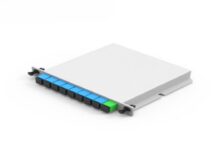The 3D printing process was established back in the 1990s. However, at this time, the process was only considered as a production technique for functional as well as aesthetic prototypes. The increase in the variety of materials used in 3D printing over the years has led to the increasing use of the additive manufacturing model. Therefore, 3D printing is currently applied in the manufacture of a wide range of products from different kinds of materials. Other than the fact that this form of printing is high-speed, another primary advantage is the fact that it can produce complex products. The complexities lie in the areas of shape, geometries, number of parts, and designs. In this post, we look into the process of 3D printing.
The process of 3D printing
There are three main processes involved in 3D printing. They include:
- Modeling
- Slicing
- Printing
- Finishing
- Modeling

This is the first step in 3D printing. It is the process where computer-aided designs are created using a 3D scanner or 3D modeling software. 3D scanners are not as popular as the latter as they tend to result in errors. However, these errors can be corrected before the process of printing begins. Through 3D scanning, essential digital data on aspects like the shape as well as the appearance of the object is collected. Various modeling software the likes of Tinkercad are available on the internet for use. Most of this software is free as long as it is used in the browser.
- Slicing
Slicing is the process through which the data collected through modeling is fed to the 3D printer. It employs the use of 3D slicing software. The data is first converted into a language that the printer can understand and prepared into a file then fed to the printer. Once it is fed into the printer, then the 3D printing machine uses the data in the production of the object. Before the printer begins its work, the model is examined and checked for errors. In case there are any errors, they are corrected then fed to the printer a new.
- Printing

There are several 3D printings models. They include;
- Material Extrusion- this type of 3D printing is common in Fused deposition modeling 3D printers or fused filament fabrication types of printers. It is also suitable for DIW and MIG welding. It is ideal for materials such as eutectic metals, clay, plasticine, rubber, thermoplastic, and edibles.
- Light polymerization- this is a model of 3d printing suitable for SLA, DLP, and CLIP 3d printing machines. It is used for materials such as photopolymers.
- Powder bed- machines like SLM. SHS, SLS, and DMLS use this type of 3d printing. The materials used here are thermoplastic powders, and metal alloys of any kind.

Take Away
3D printing technology has changed the sector of manufacturing. However, several other industries have experienced revolutionizing the impacts of 3D printing. Such industries that apply 3D printing include healthcare, education, construction, and architecture, just to mention a few. Other sectors like clothing are looking into ways of incorporating the technology as well.







